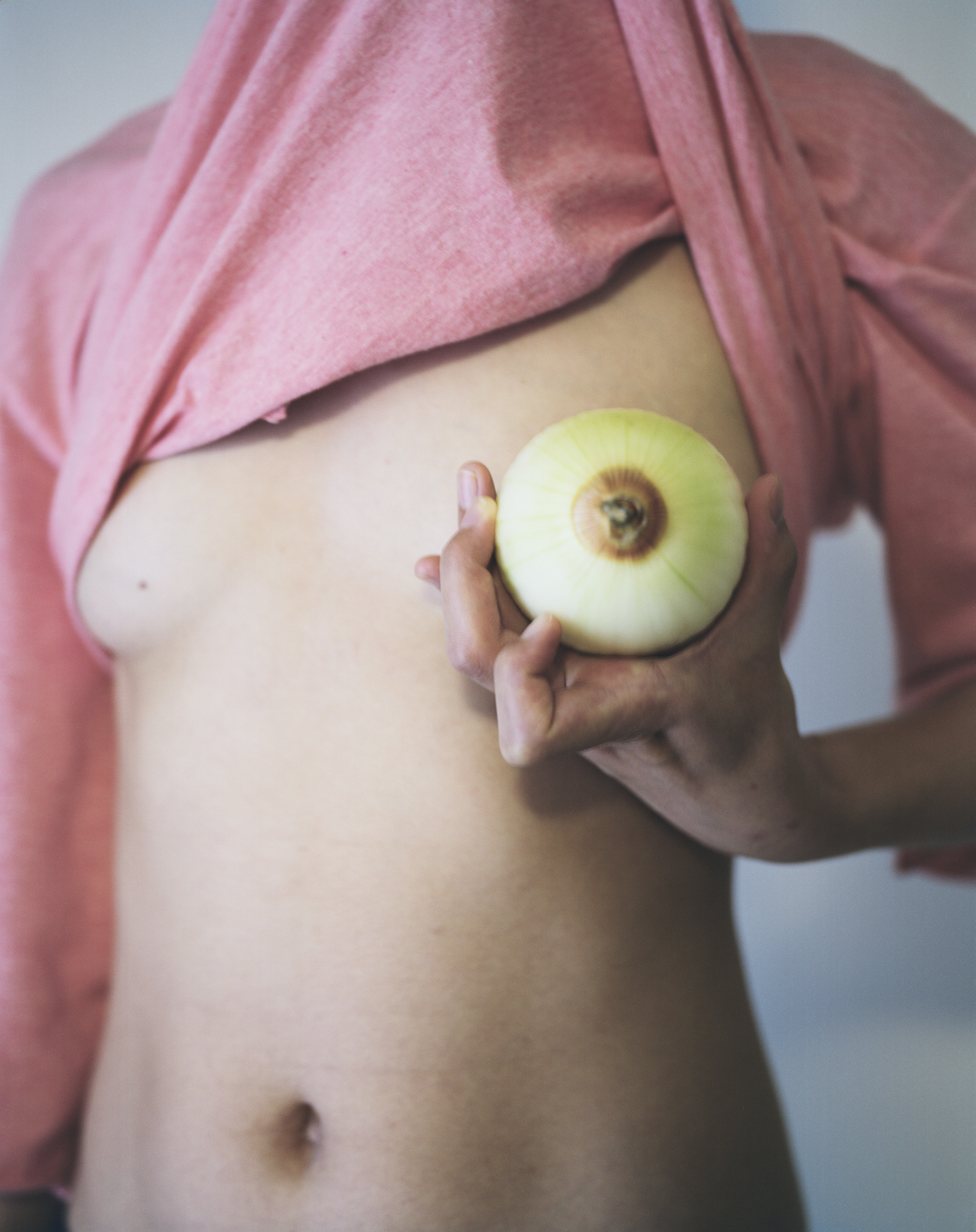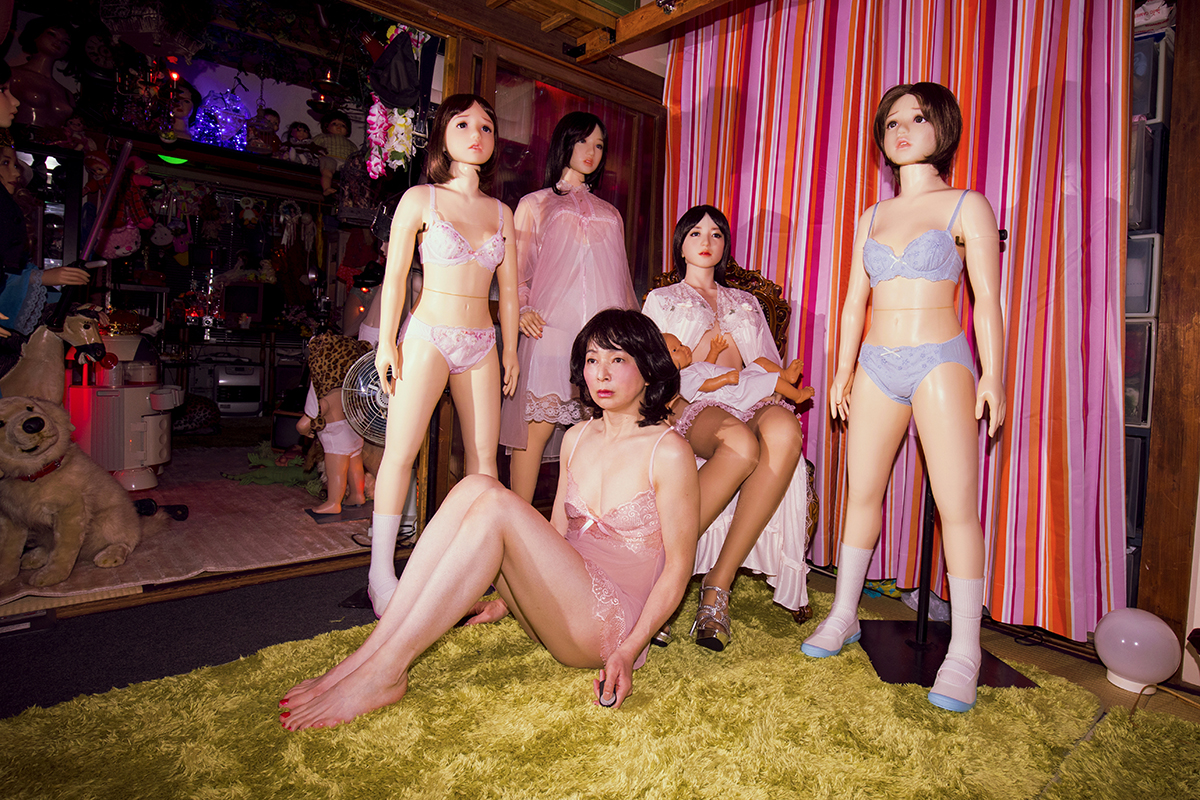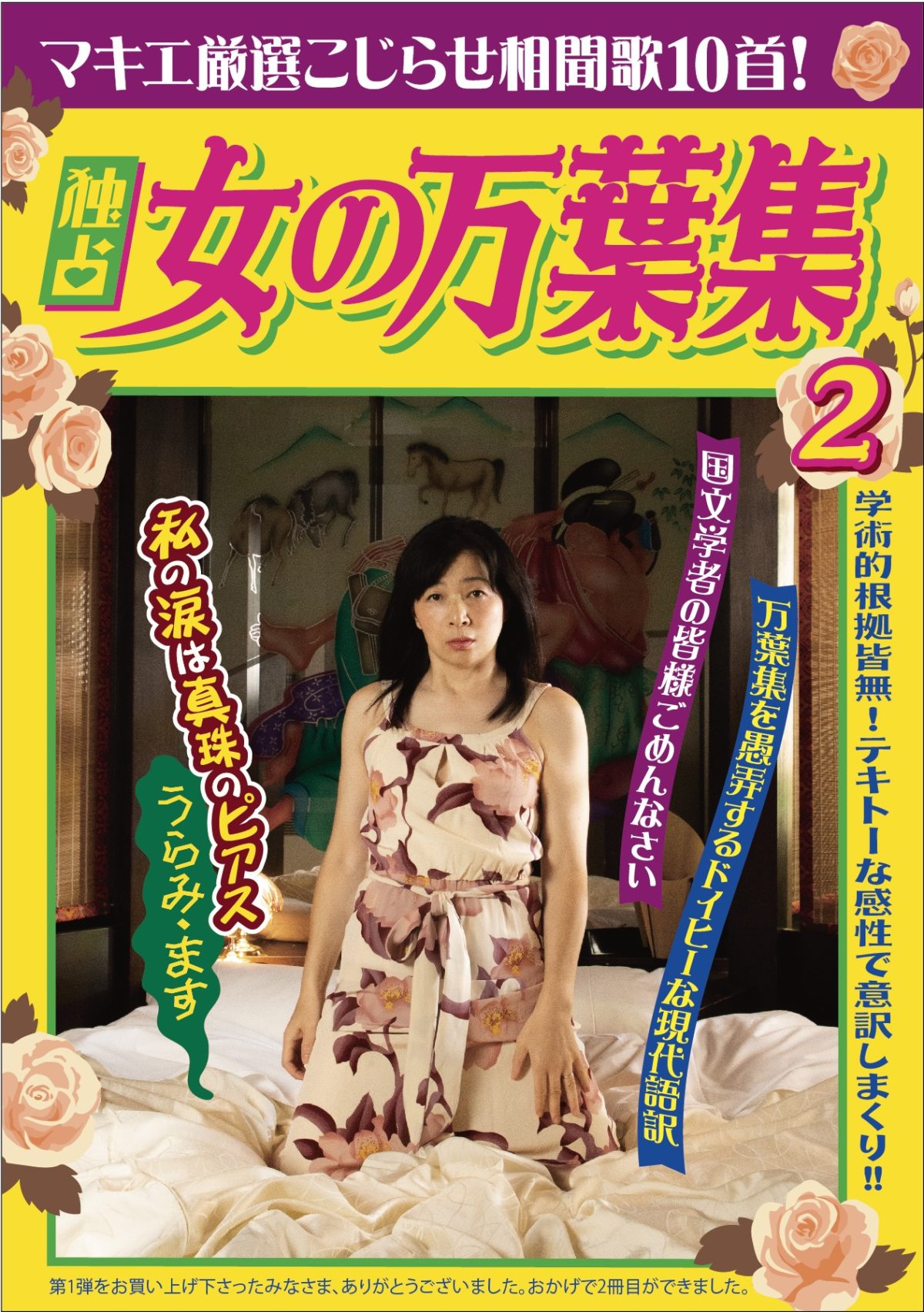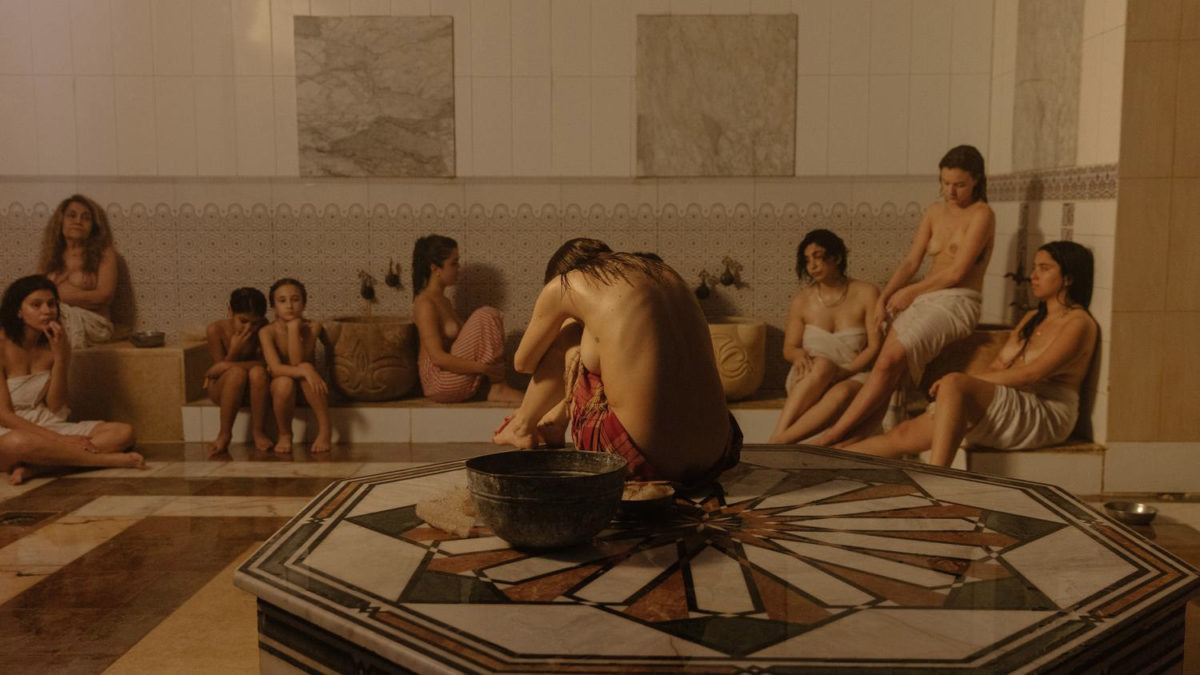#6 - Vanity My Name Is
Text by Photoworks Writer-in-residence Marissa Chen
I turned 16 in 2004, the year my friends and I really started to fall in love with ourselves. Alcohol was flowing a little more freely during our social interactions, which had evolved from daytime barbecues and chaperoned pool parties into something more subterranean, unfurling across basement stairwells and the dark and sticky bowel of the club. At the same time, our bodies – suddenly and noticeably brand-new – were met by a seismic invasion of biological changes, unearthing sights and smells that both alarmed and fascinated us during our most private of moments.

Unable to recognise who we were in the process of becoming – and in a bid to wrestle control back into our mortal hands – we turned our obsession towards what we projected on the outside instead. Our flaring hips and jawline acne were built-in furniture over which we heaped flashy high-street fashions, songs MTV said we ought to listen to, and non-regulation hairstyles copied off the backs of magazines. We were also learning – along with the rest of the world – to text and IM and Blog, burying our mother tongue under hieroglyphs of the new Information Age as relentlessly as babies do, caring far more about being heard than understood. Of course, we were only slightly modifying the age-old ritual of mirroring, trading the rules of the classroom for a higher institution still in the making. But back then, it was easier to believe we were artists, not aggregators, at the very height of individualistic expression, remaking ourselves for a world that had finally started to pay attention.
Self-portraiture has long been considered inherently subversive because it nullifies (rather than corrects) the unequal, often exploitative relationship between photographer and sitter. Artists like Francesca Woodman, Ana Mendieta and Cindy Sherman are still best-known for their self-portraits, which flipped the switch on visual history’s most enduring gender stereotypes and undermined the authoritarian clout of the Western male gaze. My friends and I held less lofty ambitions. Our earliest selfies were made on cameras like the Canon Powershot, which boasted a 5-megapixel lens and a 3x zoom that turned our pimples extra-corpulent beneath the club’s feverish strobes. In these, the photographer would easily emerge as the picture’s most distracting element, her outstretched hand crashing across the frame like a felled tree while the rest of us staked out the safety of the middle ground and tried to look as nonchalant as possible.

The pictures found their way – one painstaking kilobyte at a time – onto Friendster and Myspace, before migrating to Facebook, which currently allows for 10,000 photos and up to 50 contributors per album. It wasn’t enough just to know that we were being looked at – we wanted to know exactly how we looked by inhabiting the gazes of the other club-goers who had been watching us glide up and down the dance floor in our lowriders. The first time I saw those pictures, newly uploaded to a friend’s account after a night out, something ripped across the pit of my stomach, as though I’d lost my footing in a pile of ice cubes. Preserved in an endless scroll were peculiarities in my skin, teeth, hair and posture that I hadn’t noticed before. A great ruse in my life was slowly unraveling – if I was barely recognisable in the eyes of the outside world, who was it I’d been looking at in the mirror the entire time? Even though I’d seen pictures of myself before as a child, these now felt like a punishment for the hubris of having assumed I’d looked great. The more I learned the rules of the highly effective selfie – tuck the chin, lower the lids, avoid corners at all cost – the more I came to resent, as an adult, having my picture taken at all.
In 2013, ‘selfie’ was named the Oxford Dictionary’s Word of the Year, a choice typically made for the subject’s ‘lasting potential as a word of cultural significance’.[1] Today, the selfie is the face of a billion-dollar economy, conjured straight from the ashes of another – the sale of digital cameras like the Powershot has tumbled by 87% since 2010[2], the same year Instagram was launched. According to 2017 data, more than 93 million selfies are taken daily on Android devices alone, each ripe with the potential to catapult many a small-town kid into the revolving door of Internet celebrity, or turn you into any anthropomorphic pet you wish to be. Like Lady Liberty’s torch, the front-facing camera burns with the egalitarian promise that you alone are the author of your own destiny. It is also the proverbial tree in the forest: if there is no one around to see it, does the perfect selfie even exist?
It takes a far bigger person than me to attest to never having uploaded a group photo in which I – rather than the people around me – came off looking slightly better. The camera-shy Amish have a warning about this, one they claimed had been immortalised on stone by the finger of God. ‘Thou shalt not make unto thyself any graven image’ marries one of Christianity’s oldest sins with selfie culture’s greatest infamy. According to Hiroshi Ueda, a former development engineer at Minolta and inventor of the world’s first selfie stick, the device didn’t fly with his female colleagues when it was introduced in the 80s – not because they disliked the way they looked in photographs, but because they were embarrassed to be seen taking pictures of themselves.[3] These days there aren’t as many sacred rocks, but there are tablets of all shapes and sizes, with each swipe granting you the power of wiping the slate clean until you get the storybook ending you want. One can argue that the selfie stick’s biggest appeal lies in how it helps to maintain the illusion of companionship. As long as we aren’t looking directly into the lens, the absence of our tell-tale arm allows us to invent a second person in the room, one adoring enough to photograph us in our sleep, or in the middle of a charming deep-throated laugh. The fiendishly entertaining Instagram feed @InfluencersintheWild operates on the universal understanding that while the perfect portrait is aspirational, being caught in the act of faking one is mortifying. The schadenfreude that comes with watching people publicly humiliate themselves in pursuit of a selfie stems from the conflicting recognition that no act of vanity should go unpunished – but that until then, it continues to burn alive and well within us. ‘All the world’s a stage,’ the feed’s bio proclaims. ‘We’re all influencers, whether we like it all not.’
Japanese photographer Yurie Nagashima was just 20 years old when her black-and-white series Self-Portrait won the 1993 Urbanart Parco Prize. Although Nagashima appears in all the images, she is never alone. Equally prominent in Self-Portrait are the three other members of her family – Brother, Mother and Father, with whom we see her reading comics, having tea and playing miniature golf in the living room. Everyone is acutely aware of the camera’s presence; the fourth wall holds them up. The Nagashimas could easily have been a page out of any of our personal family archives, for one major difference – they also happen to be naked.



The kanji for the Japanese household 家 (“ie”) simultaneously refers to the physical structure of the home, as well as the family. In Self Portrait, both iterations of ie shoulder-to-shoulder. Accompanying the sitters are cabinets stacked tall with plates, a towel slung over the curtain-rod, the hairline crack of a light switch. Other portraits are cropped closely enough for you to tell that Nagashima is the spitting image of her father. But her figure neither retreats nor looms large in any of these photos. The Nagashimas are depicted as equals, and despite its title, Self-Portrait does not seek to conflate the photographer’s identity with that of her family’s – a stereotype that still beats in the heart of many patriarchal Asian cultures. Likewise, Polish photographer Aneta Bartos’s Family Portraits is a collection of selfies taken alongside Zbigniew, her 69-year-old bodybuilder father. The Polaroids, which have been described as everything from ‘uninhibited’ to seductive’, often feature Bartos lounging in lingerie and swimsuits, while a shirtless Zbigniew flexes theatrically nearby. When asked whether shooting had been ‘awkward’, Bartos replied, ‘Even though I grew up in a very Catholic society, which made you constantly feel shameful about your body and sexuality, my parents seemed to be disconnected from this mentality.’ Both projects draw attention to our moral proclivities towards the family and nudity – and the tabooistic connections that arise when the two enter the same equation – in order to dismantle them as social constructs. ‘In our house, my dad was always lounging around in his tiny Speedos while my mom sunned herself topless in the garden,’ said Bartos. ‘Without clothes, we are usually reducing everything to nudity or sex and dismissing everything else that might be lurking beneath. This approach shows the close-mindedness of our perceptions and how simplistic our thoughts are about something as natural and complex as the body and the interaction of bodies.’[4] In Self-Portrait, the gazes of the Nagashimas are projected resolutely outwards, past the walls of the home they share, and right into ours – as though to point out that the one thing weirder than sitting around naked with their family is that you aren’t doing the same with yours.


Shortly after Nagashima’s breakout, word grew about a new movement in Japanese visual arts: onnanoko shashin, or ‘girlie photograph’. It tended to reference in the same breath Nagashima, celebrity photographer Mika Ninagawa, and Hiromix, the cult sensation known for her diaristic images of teenagers taken on a 35mm compact camera. All three were Japanese artists born in the 1970s, with portfolios comprising largely images of young women. They have also often been forced throughout their careers to argue that the similarities ended there.
‘Many people wanted to put our diverse works in the same box,’ explained Nagashima to Tokyo Art Beat in 2017. Although broadly credited with founding the onnanoko shashin movement, the label was in fact conferred on her by the male art historian Kotaro Iizawa. ‘I thought it was a crazy way to describe what I was doing from the beginning,’ she continued. ‘It was so stupid, I thought there was no way that interpretation would be accepted by the world at large. So I neglected it, went to America, and when I came back I found that “onnanoko shashin” was the label given to all women photographers in that era. It was horrifying.’[5]
Iizawa’s use of onnanoko – which denotes not adult women, but young children – was intended to insult. To be called an onnanoko shashinka implied a lack of technical or emotional maturity, as well as a set of pre-existing standards for photography that had yet to be fulfilled. While Iizawa portrayed onnanoko shashin as fumbling and incidental, another male art critic, Monty Dipietro, took an opposite tack. He accused the women of capitalising on their own fading sexuality by opportunistically pandering to a male audience: ‘With their own bodies no longer schoolgirl fresh, a number of thirty-something onnanoko shashinka turned to younger models, effectively becoming the type of photographers they had originally seemed to be rebelling against.’[6]
An ie, above all else, is lineal, and never a house built for just one. It is the fact of being a woman photographer that the male gaze runs in our very DNA. The perspectives and beliefs of male artists have formed, without our conscious knowledge, many a blueprint for our own practices and taught us how – as well as what – to see. The reason for this isn’t some primordial lack on our parts. It is because, for as long as most of us can remember, the male gaze was the only prescribed way of looking at the world. Tellingly, one of the most popular criticisms of misogynistic double standards in art history was made not by a woman, but by John Berger: ‘You painted a naked woman because you enjoyed looking at her, put a mirror in her hand and you called the painting Vanity, thus morally condemning the woman whose nakedness you had depicted for you own pleasure.’ For photographers of colour, this revelation becomes even more distressing when we realise how much of the visual language we have internalised about our own communities has been rigorously shaped by white foreign journalists. ‘My self-portraits included some pretty provocative poses,’ says Nagashima of her time at the California Institute of the Arts, where she graduated with an MFA. ‘One of the other students said my work promoted a “geisha fantasy”, but in Japan there’s no such thing.’

For Bartos, nudity is simply a faithful replication of a happy, ordinary childhood: ‘Posing with [my father] in our underwear for my series felt exactly how it felt then.’[7] For Nagashima, Self-Portrait, like all photography, is pure performance. ‘I tried to position myself on the edge of things, but still I found myself interrupting situations and conversations. There is no way subjects can act completely naturally during shots, and I realised that taking photographs brings an element of the unordinary in any scene … [It] was never about my family specifically, but about asking, “What is family’?”’[8]
If the parochial house of the father is merely theatre, the question still remains as to whether we had been born of it, or outside of it. When we look at an image of a woman and feel a certain rumble, what is the nature of the haunting? Perhaps it is the reason why we can’t seem to tear our eyes away from Behnaz Babazadeh’s portraits of women cloaked in burqas made from Gummi Bears and pink cotton candy. Bright, brash, and wonderfully comical, the photographs are specifically primed to disarm an audience used to interpreting the burqa as a Western media shorthand for otherness and Islamophobia. It is also the element of surprise that underpins the work of the fantastic Maki Makie, who superimposes her 54-year-old face and body into scenes borrowed from 80s Japanese soft-core movies and magazines. Makie’s images not only offer an empowering perspective on the ageing process, they also compel us to examine the way the media tends to exclusively fetishise bodies that are “schoolgirl fresh” – that is to say, as close to underaged as is legally permitted – in its portrayals of female beauty and sexuality.

For arts journalist Charlotte Jansen, this feeling was anger. When she first came across Mayan Toledano’s 2014 image Sherris in Palm Springs, instinctive response echoed that of critics who worried that the growing commodification of feminism was counterproductive to the cause and benefitted only a privileged subsector of middle-class cis white women. Toledano’s rosy image of a glittering naked torso in pale cotton underwear (across which marches the word “FEMINIST”) quickly spread across Tumblr and Pinterest, eventually making its way into the pages of Elle and the New Yorker. Along with her friend and collaborator Petra Collins, she has since been hailed as one of the leading voices of a new photographic movement – the millennial ‘female gaze’.

It is difficult to divest an image like Sherris in Palm Springs from the muscle memory of the male gaze. Charming, conventionally feminine, and beautiful to the point of passivity, it could probably have passed for a ‘girlie photograph’ had it arrived two decades earlier. It is also true that such photographs tend to skirt around issues that more marginalised visual artists confront of a daily basis – things like class, sexuality and race – and can feel frustratingly insular in a time of escalating far-right politics. But, Jansen argues, ‘photographs taken by women do not only exist as a counterpoint to the male narrative … At times, there seems to be little difference between how women photograph women and how men photograph women, but women have the right to self-objectify and to exploit without critique, just as men have been allowed to do since the earliest forms of art emerged. Does it matter whether Toledano’s image was shot by a man or a woman? I believe it does.’[9]
The male gaze exists only as a touchstone for reality because it has contextualised an entire world for women out of thin air. For centuries, what we thought had been mirrors were in fact pictures of ourselves we’d never seen before, hanging on the walls of somebody else’s house. But equally, no woman is unharmed by the myth of ‘the female gaze’, since it presupposes a singular uniform experience and erases centuries of inequality, bias and internalised misogyny that have coursed through the bloodline of gender history. Jansen ultimately decided to include Sherris in Palm Springs in her 2017 compendium of contemporary women photographers, Girl on Girl. ‘There’s a community that understands what they are doing,’ she said. ‘There is already a very clear understanding that this is what it is about and this is whom it’s for, and that’s coming from the artists. They are not waiting for a magazine or a newspaper or a critic to contextualize it for them. That has never really happened before. We [women] haven’t had the tools to be able to do that.’[10] If the women in the photographs strike one as naval-gazing and vain, it is because they have exercised their absolute freedom to be nothing else. There is room enough in these still-unchartered waters for candy hearts and tampon art, and other ‘girlie’ stories – those just aren’t the only ones that deserve to be heard.
We often look at images of our ancestors to see if we can spot the same ski-jump nose, or to despair at how an impeccable hairline never quite made it to this side of the gene pool. Likewise, when we look at pictures of women, we are searching for something that isn’t there – not because it has no place in reality, but because ours is a spectrum of experience. It is the eternal crossing between interiority and exteriority, self-love and self-hatred, the living and the dead. There is no female gaze, but there have always been millions of women looking.
Read more Photography+Learn more about our writer-in-residence Marissa Chen
Notes
[1] https://languages.oup.com/word-of-the-year/
[2] https://www.statista.com/chart/5782/digital-camera-shipments/
[3] https://www.bbc.com/news/magazine-32336808
[4] https://i-d.vice.com/en_us/article/nebak8/these-uninhibited-family-portraits-explore-the-relationship-between-a-bodybuilder-and-his-daughter
[5] http://www.tokyoartbeat.com/tablog/entries.en/2017/11/yurie-nagashimas-and-a-pinch-of-irony-with-a-hint-of-love.html
[6] https://www.japantimes.co.jp/culture/2001/05/02/arts/girly-photographer-charts-her-own-course-2/
[7] https://i-d.vice.com/en_us/article/nebak8/these-uninhibited-family-portraits-explore-the-relationship-between-a-bodybuilder-and-his-daughter
[8] https://medium.com/@TokyoArtBeat_EN/yurie-nagashimas-and-a-pinch-of-irony-with-a-hint-of-love-34cf1f476041
[9] https://edition.cnn.com/style/article/girl-on-girl-female-gaze-photography/index.html
[10] https://edition.cnn.com/style/article/girl-on-girl-female-gaze-photography/index.html





